An important strategic centre, the city was part of Roman Thrace until 187–193, and then belonged to Moesia inferior. Marcianopolis's prosperity under the Severan Dynasty was ended by a Gothic raid in 248–249 and subsequent barbarian invasions from the north. The Romans repulsed another Gothic attack to this town in 267 (or 268), during the reign of Gallienus.
Under Emperor Diocletian Marcianopolis became the centre of the province Moesia Secunda of the Diocese of Thrace, and was rebuilt thoroughly in the late 3rd and early 4th century. In 447, it was destroyed by the Huns under Attila, immediately after the bloody battle of the Utus river.
Modern location: Devnya, Bulgaria
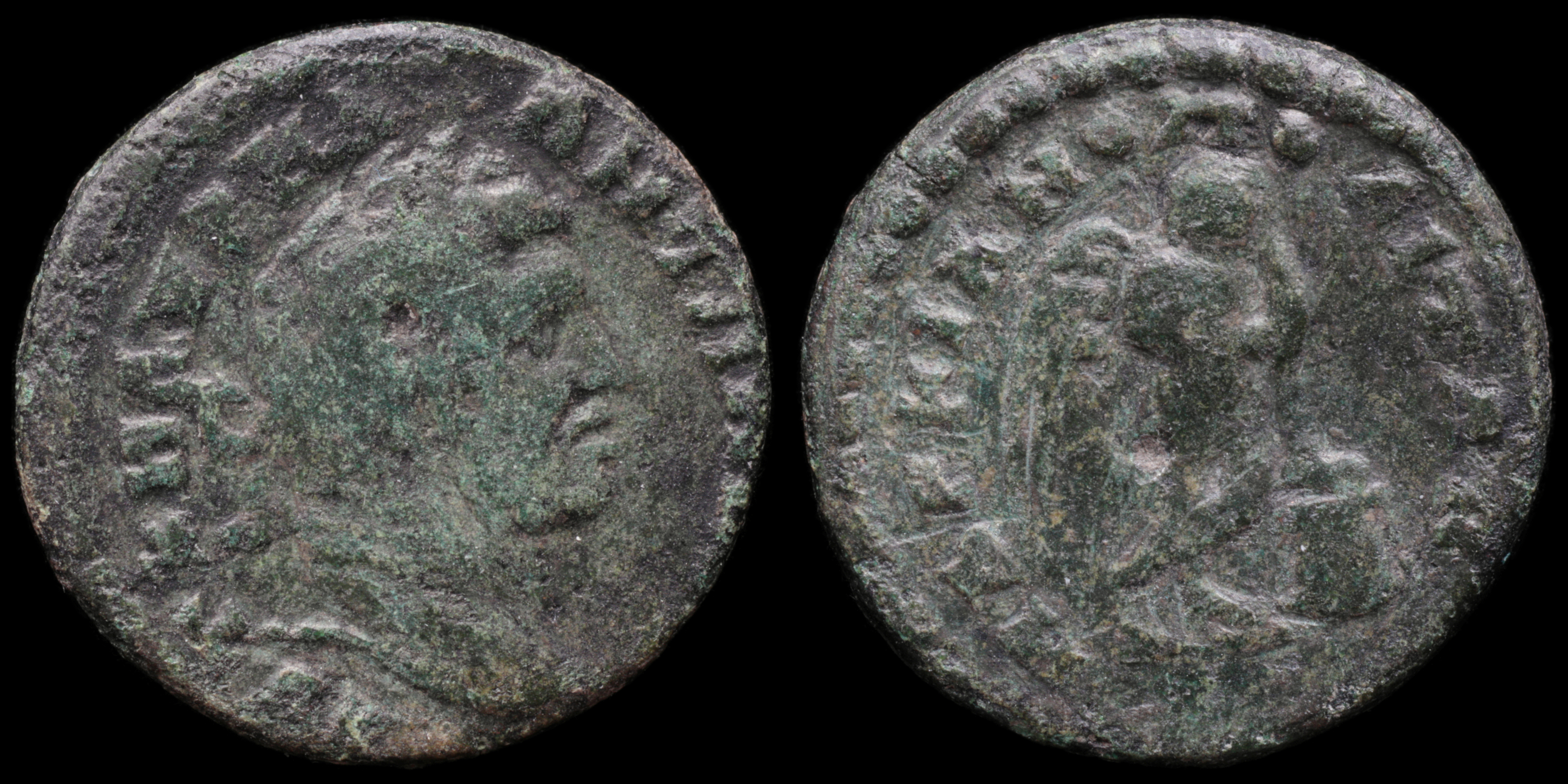
Reverse: winged Thanatos or Eros right leaning on torch set on decorated altar; MAPKIANOΠO_ΛITΩN
Die Orientation: -
Weight: 2.71 g
.jpg)
Reverse: VΠA KVNTIΛIANOV MAPKIANOΠOΛITΩ-N, Tyche Soteiros (Fortuna Redux) standing left, holding rudder in outstretched right hand and cornucopiae in left; E in upper left field.
Die Orientation: -
Weight: -
.jpg)
Reverse: Homonoia standing left, holding patera and cornucopia; E (mark of value) to right.
Die Orientation: -
Weight: 12.05 g
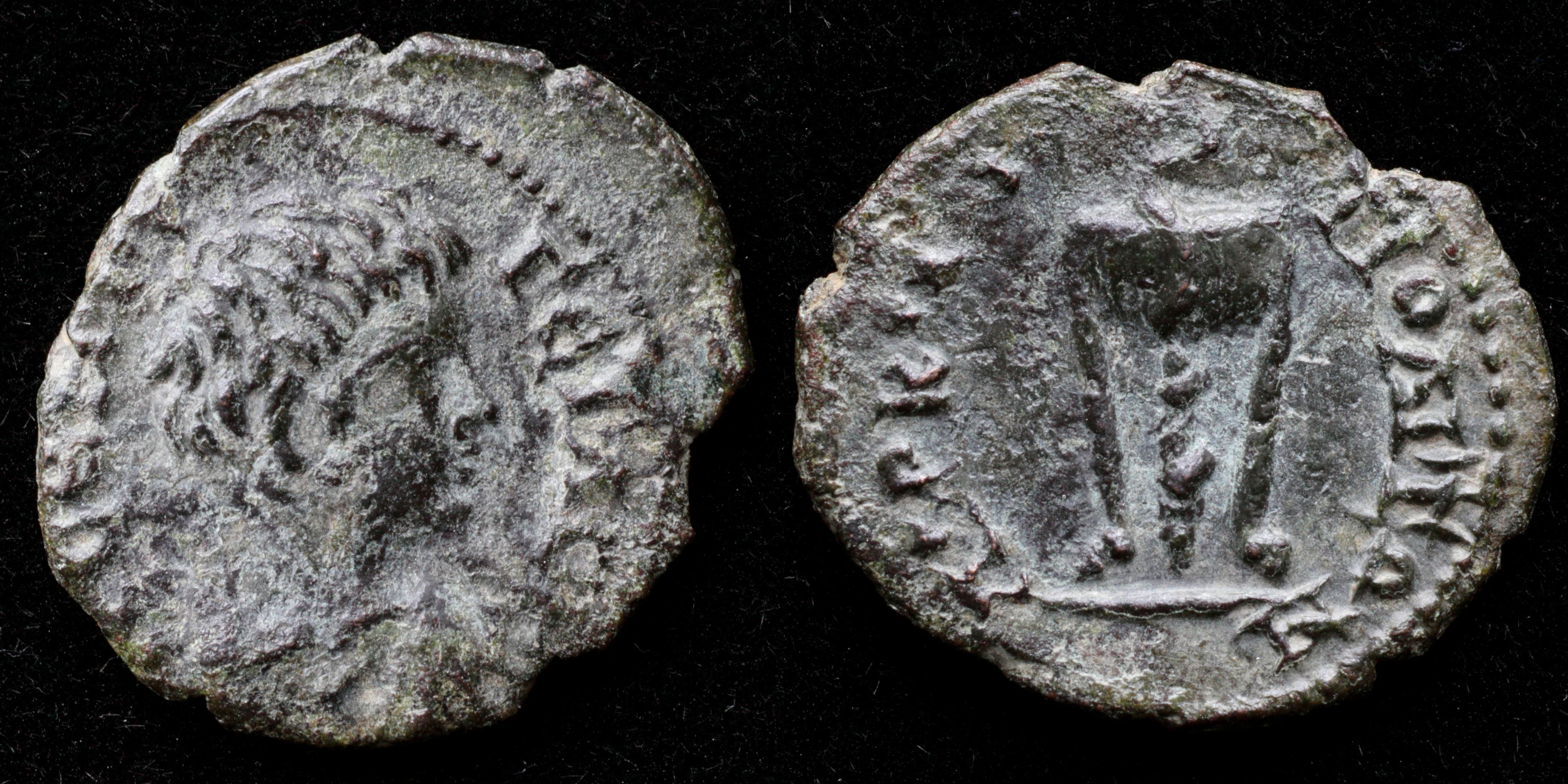
Reverse: tripod, snake entwined around leg; MAPKIANO_ΠOΛITΩN
Die Orientation: -
Weight: 1.74 g
.jpg)
Reverse: VΠ ΠONTIAN-O-V MAPKIANOΠOΛEI / TΩ-N / Demeter standing right, holding 2 corn-ears in left hand and a sceptre in right. E in upper right field
Die Orientation: -
Weight: 11.9 g
.jpg)
Reverse: MAPKIANOΠOΛEITΩN, bearded serpent coiled left; E (mark of value) to right
Die Orientation: 1 H
Weight: 12.42 g
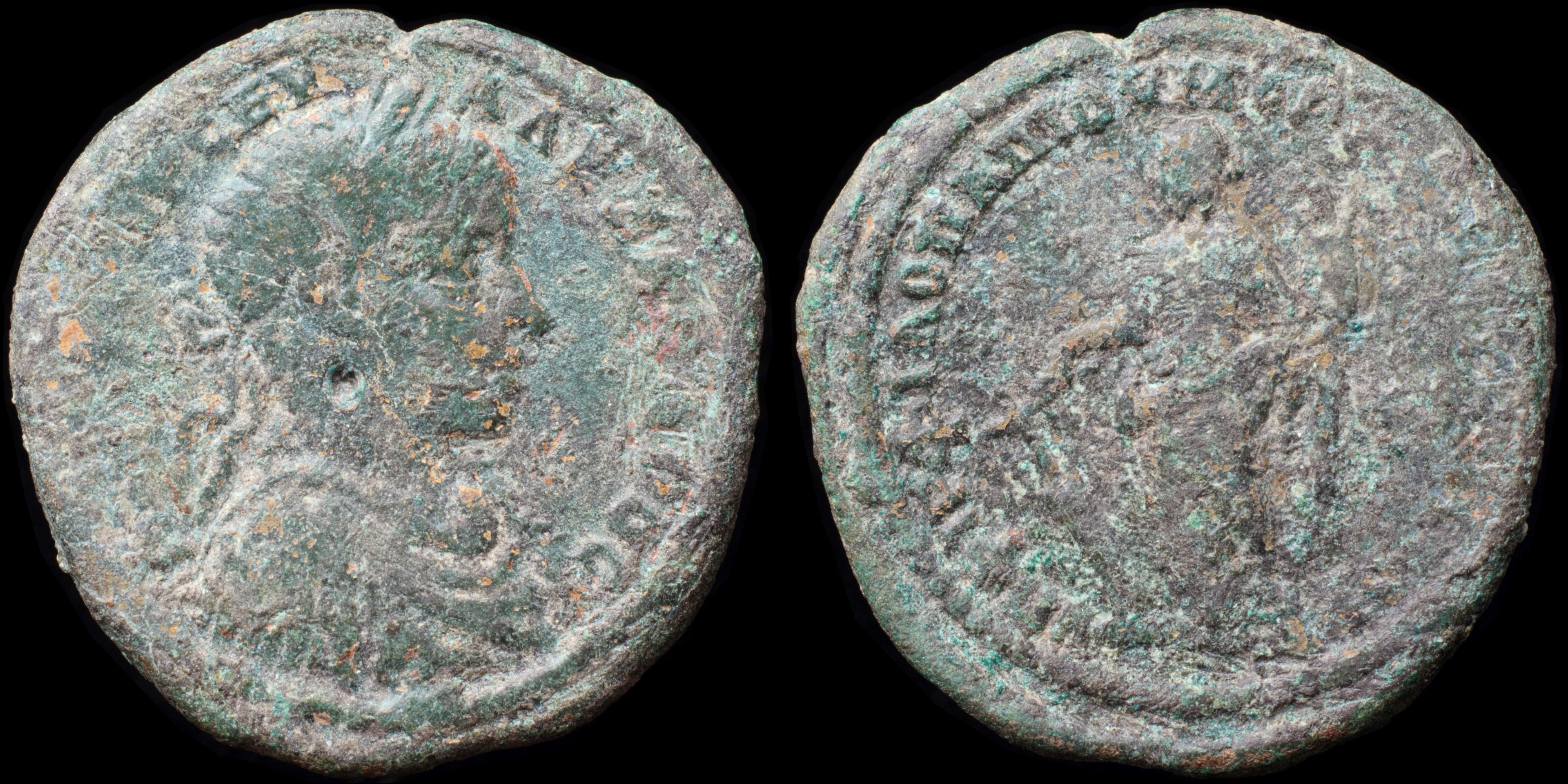
Reverse: Tyche standing half left, holding rudder and cornucopia VΠ ΦIP ΦIΛOΠA(ΠΠ)OV MAPKIANOΠOΛIT(ΩN)
Die Orientation: -
Weight: 9.72 g
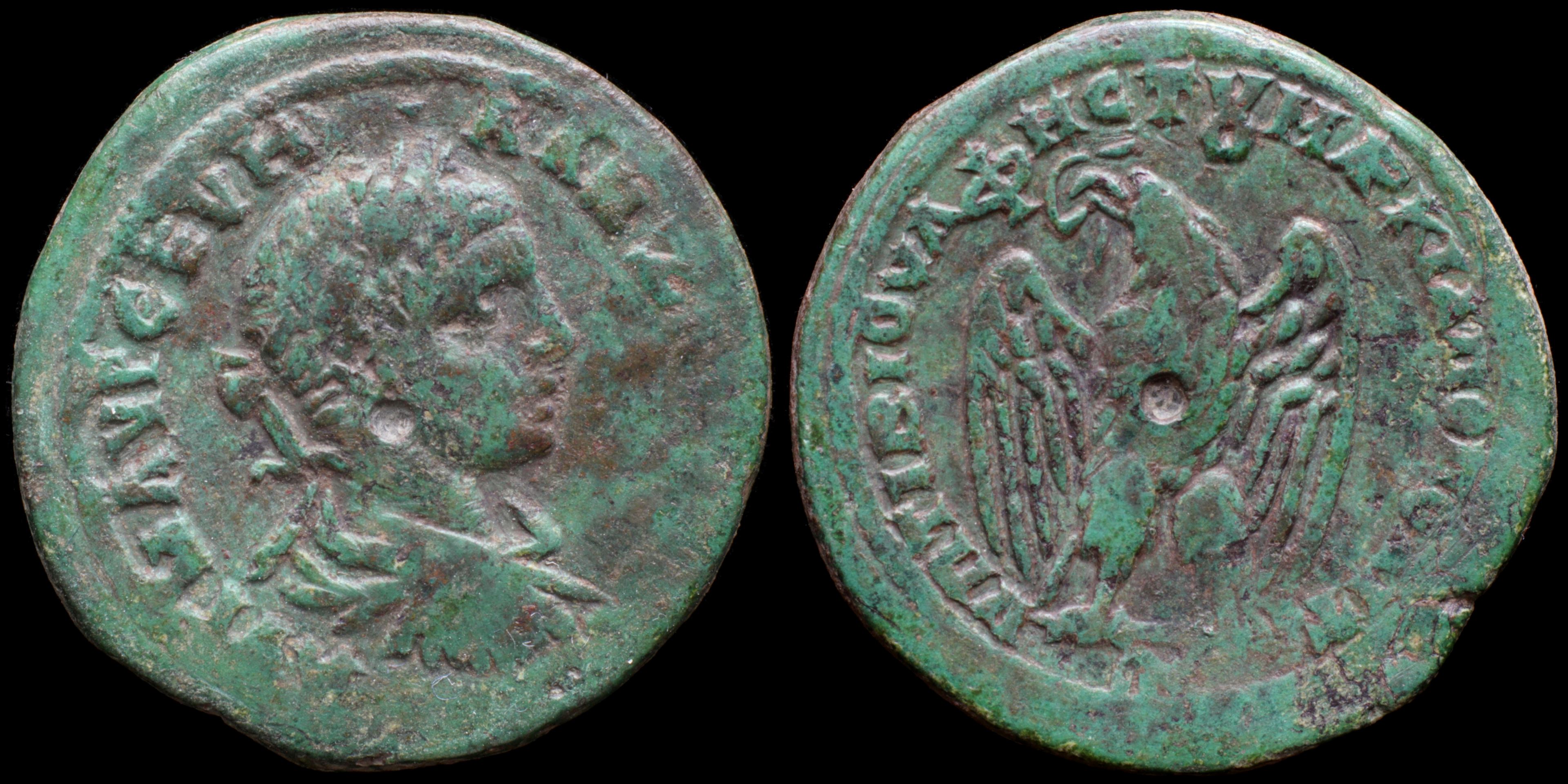
Reverse: eagle facing, head left, wreath in beak; VΠ TIB IOVA ΦHCT(OV) MAPKIANOΠOΛIT(ΩN)
Die Orientation: -
Weight: 9.2 g
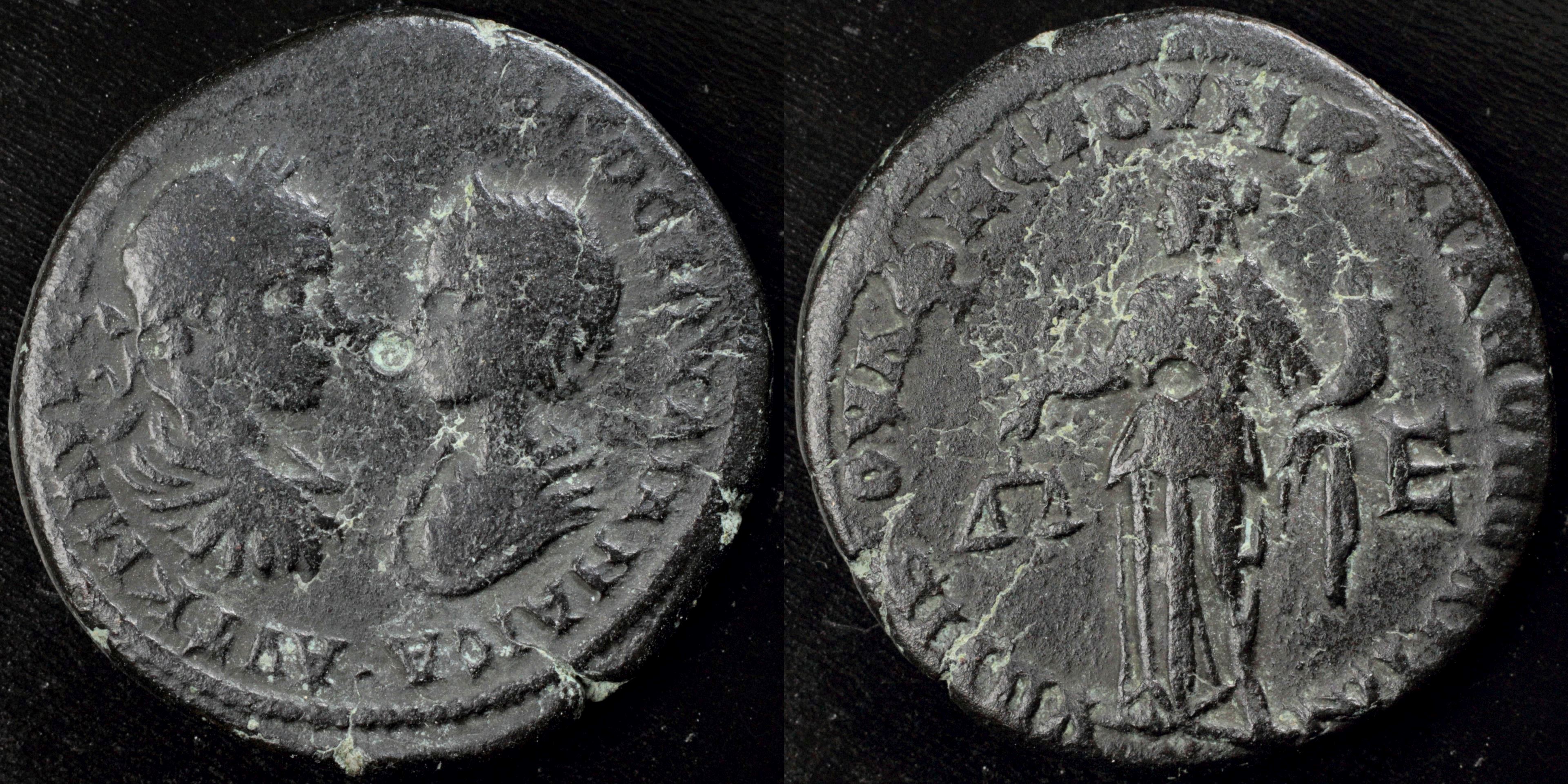
Reverse: Dikaiosyne (Aequitas) standing half left, holding scales and cornucopia; VΠ TIB IOVΛ ΦECTOV M(AP)KIANOΠOΛIT(ΩN) / E
Die Orientation: -
Weight: 11.12 g
